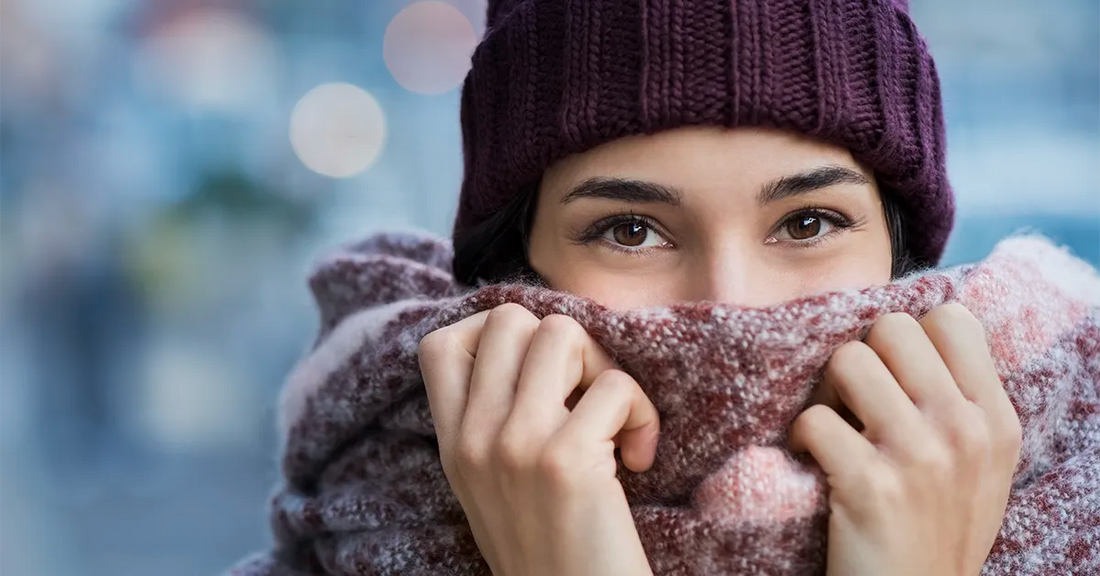
Cold Weather and Incontinence: Why Winter Might Worsen Symptoms and How to Cope
Share
Winter brings chilly temperatures, cozy blankets, and warm drinks, but for those managing adult incontinence, the colder months can also present unique challenges. Many people notice that their bladder control issues become more pronounced in the winter, leading to increased urgency, frequency, and occasional leaks. But why does this happen, and what can you do to stay comfortable and confident throughout the season?
Understanding how cold weather affects the bladder and learning effective incontinence management strategies can help you navigate winter with ease. Let’s explore the reasons why incontinence may worsen in cold weather and discover practical ways to maintain control and comfort.
How Cold Weather Affects Bladder Control
1. Increased Bladder Sensitivity
Cold temperatures can lead to a phenomenon called cold diuresis, which causes the body to produce more urine than usual. When exposed to the cold, blood vessels constrict to preserve body heat. This shift increases blood pressure, prompting the kidneys to remove excess fluid from the bloodstream, resulting in more frequent urination. If you already struggle with urge incontinence or overactive bladder, this natural response can exacerbate your symptoms.
2. Reduced Mobility and Physical Activity
During winter, people tend to stay indoors more often, reducing their overall physical activity. A sedentary lifestyle can weaken pelvic floor muscles, making it harder to control bladder function. Limited movement also increases the risk of constipation, which can put added pressure on the bladder and contribute to leaks.
3. Layering and Bulkier Clothing
While layering up is essential for staying warm, wearing bulky winter clothing can make it more difficult to reach the restroom in time. The extra layers can slow down bathroom trips, increasing the chances of leaks—especially for those managing stress incontinence or mobility challenges.
4. Dehydration and Bladder Irritants
Many people drink less water in winter because they don’t feel as thirsty. However, dehydration can irritate the bladder, leading to more urgency and increased sensitivity. Additionally, wintertime staples like coffee, hot chocolate, and seasonal alcoholic drinks can act as bladder irritants, worsening incontinence symptoms.
How to Manage Incontinence in Cold Weather
Despite these winter-specific challenges, there are many ways to manage incontinence effectively and continue enjoying the season without worry.
1. Stay Hydrated (the Right Way)
Although it’s tempting to reduce fluid intake to avoid frequent trips to the bathroom, dehydration can actually make incontinence symptoms worse. Drink small amounts of water consistently throughout the day to keep your bladder healthy. Opt for non-caffeinated herbal teas or warm water with lemon instead of bladder-irritating drinks like coffee and alcohol.
2. Choose the Right Incontinence Products
Winter calls for extra protection to ensure confidence and comfort. Wearing absorbent adult diapers or protective incontinence underwear designed for overnight or extended wear can help manage leaks more effectively. If bulkiness is a concern, opt for thin but high-absorbency briefs that fit discreetly under winter clothing.
For additional protection, consider waterproof mattress covers and disposable seat protectors when traveling or staying at a loved one’s home for the holidays.
3. Dress for Convenience and Comfort
Layering is essential in winter, but choosing easy-to-remove clothing can make bathroom trips more manageable. Opt for:
-
Elastic waistbands instead of complicated zippers and buttons.
-
Long sweaters and tunics that provide coverage without adding extra layers near the waist.
-
Moisture-wicking fabrics that keep skin dry and comfortable.
4. Maintain a Consistent Bathroom Schedule
Sticking to a regular bathroom schedule can help prevent accidents. Even if you don’t feel the urge to go, try using the restroom every 2–3 hours to reduce the risk of leaks. Keeping a schedule can also train your bladder and improve control over time.
5. Strengthen Pelvic Floor Muscles
Weak pelvic floor muscles contribute to bladder leaks, but regular exercises can help improve control. Practicing Kegel exercises can strengthen these muscles and reduce symptoms of both stress incontinence and urge incontinence. If you’re unsure how to start, consider working with a pelvic floor therapist to develop a customized routine.
6. Avoid Bladder Irritants
Certain foods and drinks can irritate the bladder, leading to increased urgency and sensitivity. Common winter culprits include:
-
Caffeinated beverages (coffee, tea, energy drinks)
-
Alcoholic drinks (especially wine and beer)
-
Spicy foods
-
Citrus fruits and juices
-
Artificial sweeteners
Keeping a bladder-friendly diet can help minimize symptoms and improve overall comfort.
7. Keep Warm and Comfortable
Staying warm can help reduce the effects of cold diuresis and prevent sudden urges. Wear thermal undergarments for insulation, use heated blankets, and keep your home at a comfortable temperature to minimize the impact of the cold on your bladder.
8. Plan Ahead When Going Out
Winter outings, from holiday shopping to social gatherings, can be stressful if you’re worried about incontinence. Plan ahead by:
-
Using the restroom before leaving home
-
Mapping out nearby restrooms in case of emergencies
-
Carrying extra incontinence products in a discreet bag
-
Wearing protective pads or briefs for added security
9. Address Nighttime Incontinence
Cold weather often means cozying up under layers of blankets, but nocturnal incontinence (bedwetting in adults) can be a concern. To minimize nighttime accidents:
-
Limit fluid intake a few hours before bed
-
Use absorbent overnight protection like high-absorbency adult diapers
-
Consider a bedside commode for quick access
10. Seek Professional Support If Needed
If your incontinence symptoms worsen significantly in winter, it may be time to consult a healthcare professional. A doctor can evaluate underlying causes and recommend pelvic floor therapy, medications, or lifestyle modifications to improve bladder control.
Embracing Winter with Confidence
Although cold weather can make incontinence management more challenging, the right strategies and reliable incontinence products can help you enjoy winter with confidence. By staying hydrated, dressing for convenience, strengthening your pelvic floor, and avoiding common triggers, you can maintain bladder health and peace of mind throughout the season.
Whether you’re sipping warm tea by the fire, enjoying holiday gatherings, or embracing outdoor winter fun, you don’t have to let incontinence hold you back. Prioritizing comfort and self-care will allow you to navigate the colder months without stress.
If you’re looking for high-quality incontinence solutions that provide comfort, discretion, and protection, consider trying TREST’s premium adult diapers. With superior absorbency and a comfortable fit, TREST ensures that you can enjoy winter activities without worry.
Stay warm, stay confident, and take control of your bladder health this winter!
